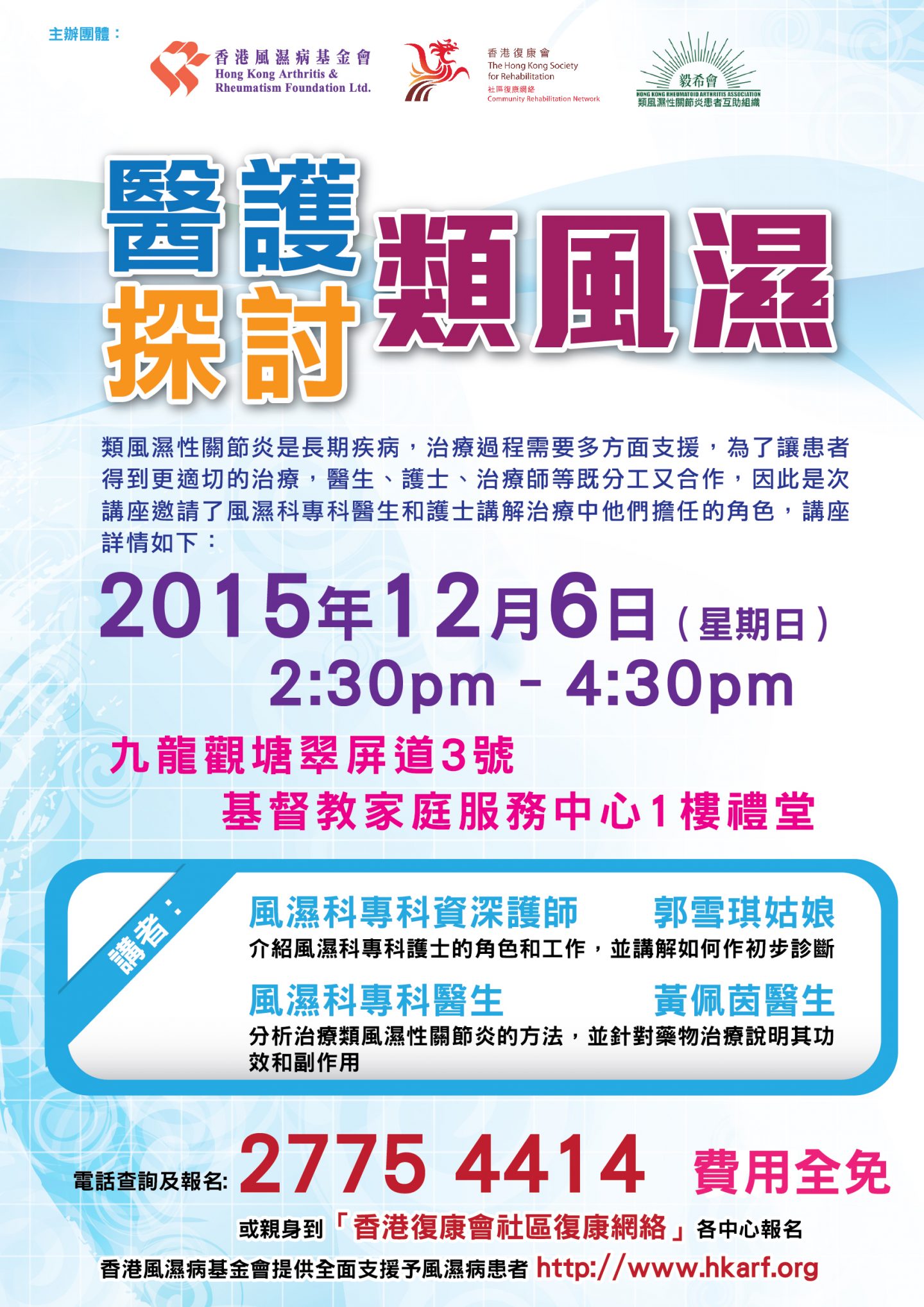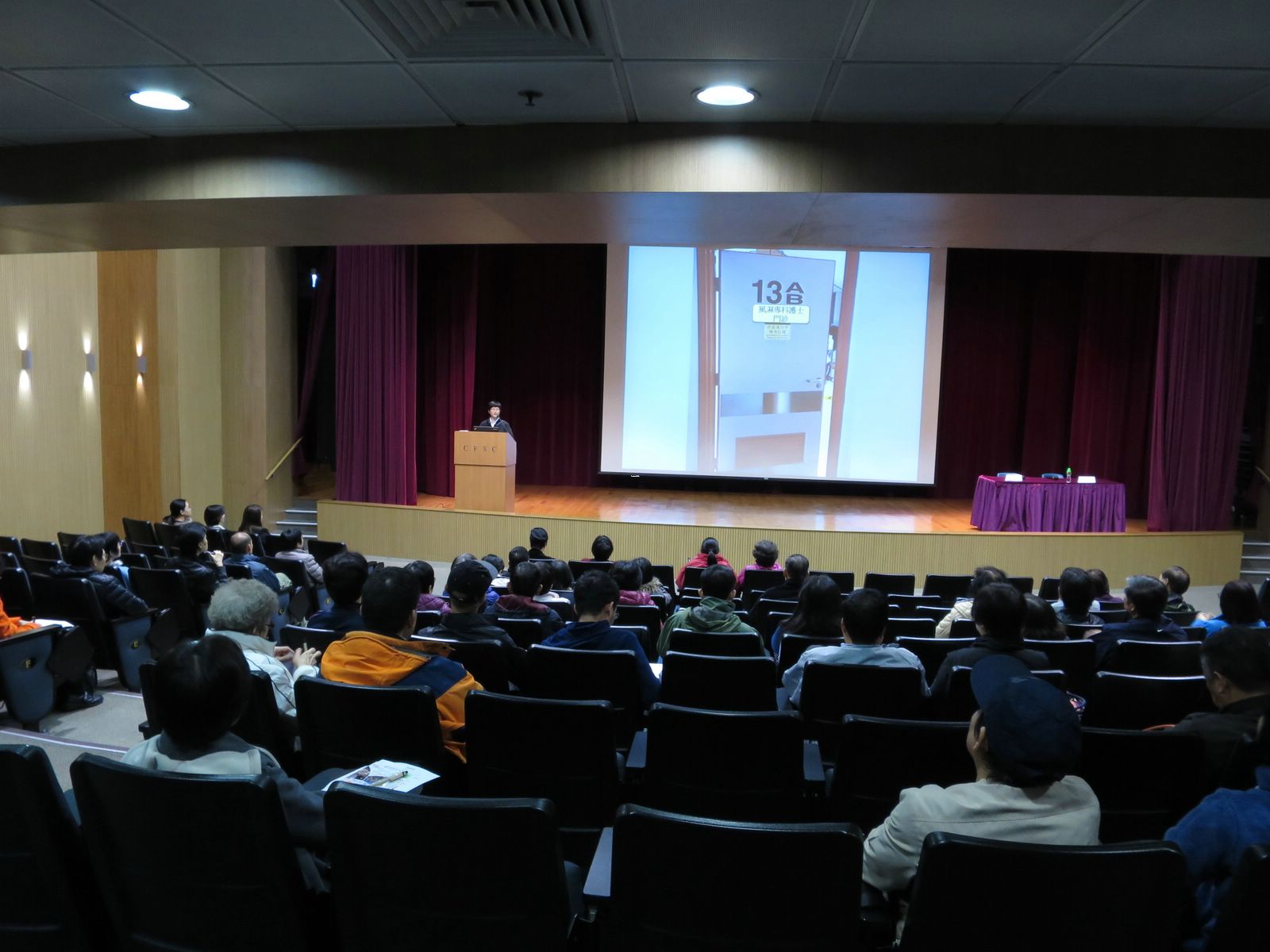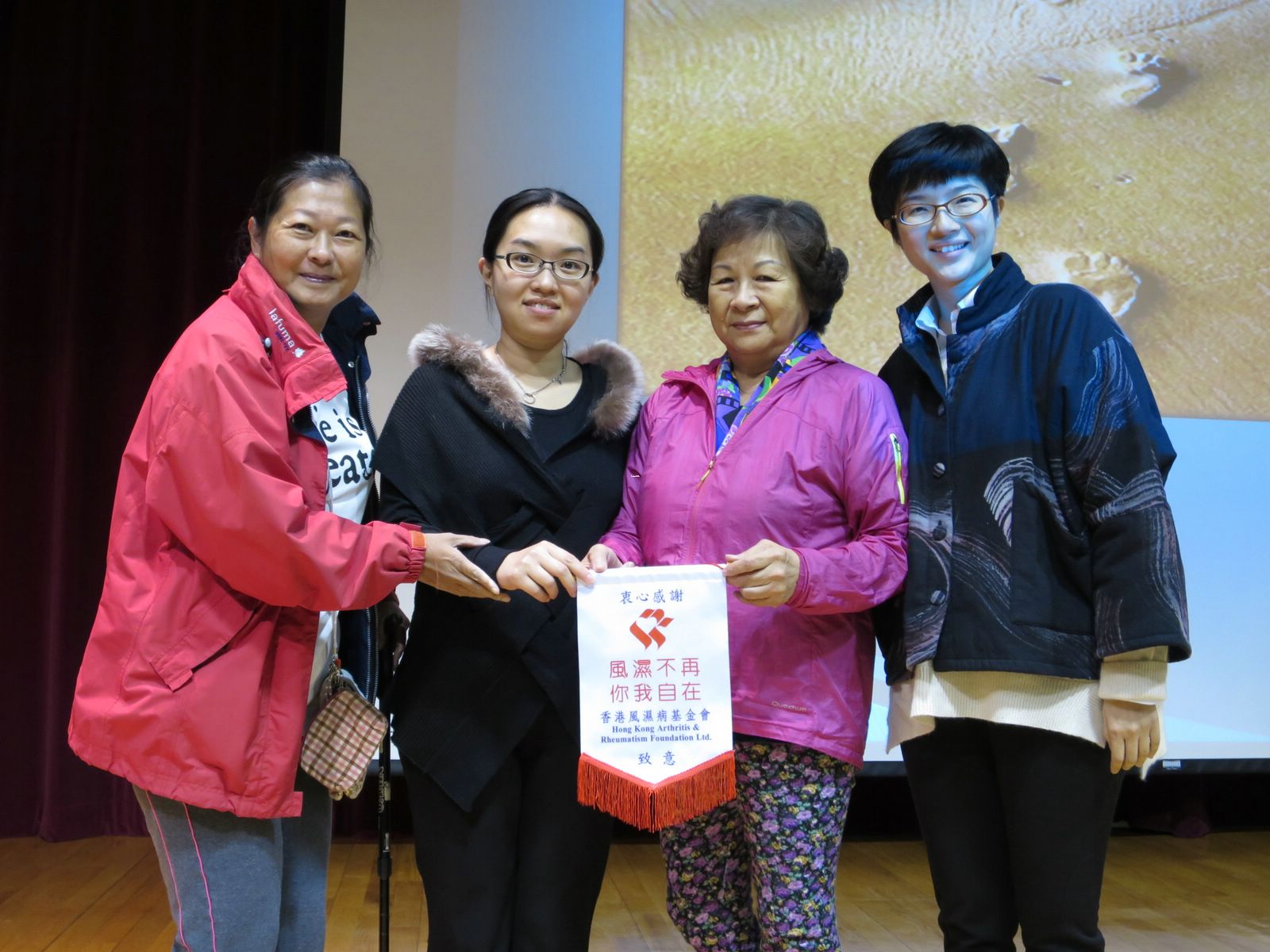
Educational Talk: Treatment & Diagnosis of Rheumatoid Arthritis
6 December 2015
Educational Talk: Treatment & Diagnosis of RA talk was taken part in the Auditorium of Christian Family Service Centre in Kwun Tong on 6 December 2015. The talk aimed to enhance people’s understanding on the diagnosis and treatment of RA. There were 92 participants in total.
The talk was started by Ms. Gladys KWOK, an advanced practice nurse in rheumatology, used a patient case to illustrate the diagnosis of RA and the role of rheumatology nurses. She first welcomed all participants to her nurse clinic and explained how the nurses would handle new referrals. To diagnose RA, several checking tests were required. The patient would be diagnosed unless the checking result fulfilled the standard diagnosis criteria. Rheumatology nurses supported patients in various aspects which included disease education, monitoring patients’ health condition, assessing the effectiveness and risk of treatment and counselling. Lastly, Ms. KWOK emphasized the purpose of setting up the enquiry hotline of rheumatology clinic was answering patients’ doubts on taking medication. She hoped the participants to understand that this hotline was unable to look up the date of follow-up consultation or the status of referral.
Apart from this, the talk was continued by Dr. Stella WONG, a specialist in Rheumatology, to introduce the basic information of RA. At the early stage, they symptoms of RA were quite similar to other rheumatic diseases. Although a number of public educational activities were conducted to disseminate correct information, the public could hardly distinguish RA from osteoarthritis (OA). Both diseases would result in joint pain but the causes and treatment were totally unalike. Moreover, Dr. WONG introduced the principles of applying different kinds of medication including common oral drugs, biologics and the latest oral biologics. She reminded the participants that the treatment on RA was improved and more efficient nowadays. Yet, the best way in protecting patients’ joints to prevent deformity was early diagnosis with appropriate treatment.
The talk then followed by a Q&A session where participants actively asked questions. Dr. WONG and Ms. KWOK answered with patience to solve their doubts. The audiences found the information from the talk useful and showed great interested in similar topic.












